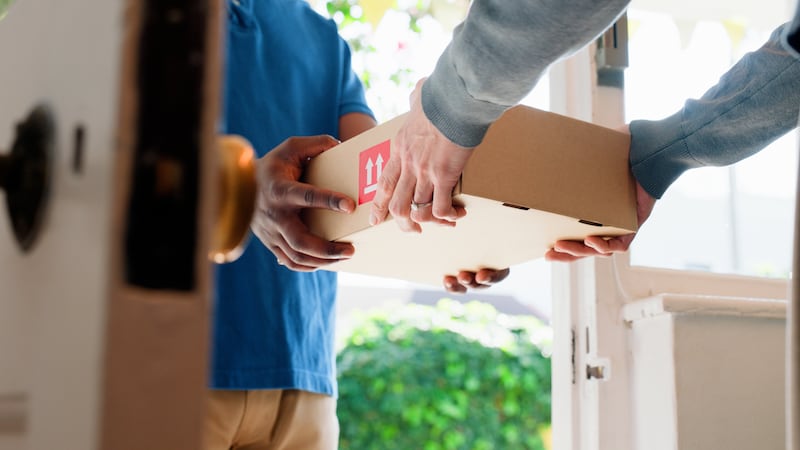As gardeners, we hear a lot about how to help support wild garden bird populations through the cold, dark months of late autumn, winter and early spring, when nutritious foodstuffs are at a minimum and a supplemented supply of vegetable fat, nuts and seeds can make all the difference. But what about the rest of the year? What plants, for example, will help provide sustenance to Irish birdlife in the thick of an Irish summer or in early autumn?
The answer to that question includes everything from the nutritious seedheads, fruits, nuts and berries of common garden “weeds” and native wild species such as dandelions, dock, ragwort, thistle, teasel, elder, willowherb, blackberry, crab apple, hawthorn and sloe, to those of cultivated kinds including birch, rowan, sunflower, pear, fig, apple, raspberry, strawberry, roses, kale, stipa, pennisetum, cotoneaster, zinnia, cosmos, nigella and eryngium.
The tiny seeds of silver birch, for example, are loved by tits and greenfinches, while thrushes and blackbirds like nothing more than to feast on the ripe berries of rowan trees and elderberries. Specialist seed-feeding species such as goldfinches will also eat the seeds of a wide variety of common garden weeds as well as those of lavender, which they find delicious, while siskins love the seeds of many kinds of common tree species including pine, spruce, alder and birch. Omnivorous robins, meanwhile, will eat a wide variety of fruit from sloes and grapes to hawthorn berries, overripe apples and the seedheads of sunflowers. As for the shy and secretive jay, its love of acorns draws it to gardens where oak trees grow.

Plants’ role as a source of food aside, our gardens and allotments also play an essential role in creating valuable habitats for the kinds of garden minibeasts that species of wild birds rely on for food, from earthworms, slugs, ants and beetles to aphids, flies, spiders and caterpillars.
READ MORE
If you’ve ever been out and about very early in the morning, for example, you’ll almost certainly have spotted blackbirds and thrushes using their sharp beaks to search flowerbeds and lawns for earthworms, slugs, insects and snails.

Woodpeckers and treecreepers will also visit gardens in search of insects concealed inside dead wood, a good reason to have a nature-friendly woodpile where they can forage, or perhaps to leave some of the fallen branches of a storm-toppled tree in a quiet corner to rot down. Dunnocks also feed mainly on small insects, and can often be found rummaging around in the fallen leaf litter beneath trees and hedges, yet another good reason not to be too tidy-minded when it comes to our gardens. As for those who would love nothing more than to have their garden visited by owls, perhaps consider developing even a small area of it as a meadow or leaving an area as rough, uncut grass. This will provide a valuable habitat for field mice, voles and shrews, all of which these nocturnal birds love to feed on.

Endlessly engaging, entertaining and life-affirming, garden birds also play an invaluable role as natural pest controllers in our gardens. Many, for example, will happily feed on aphids and caterpillars, dramatically reducing the latter’s ability to damage a wide range of food crops and ornamental plants as well as to spread plant diseases.
Create the right habitats for blackbirds, thrushes and starlings in the shape of leafy garden hedges, trees and shrubs, and they’ll reward you by significantly reducing damage to plants from slugs and snails. Meanwhile, along with naturally managing rodent populations, barn owls play a specialist role in controlling populations of the greater white-toothed shrew, a non-native, invasive species that threatens to displace populations of Ireland’s native woodmouse and pygmy shrew.
Birds also play an important role in seed dispersal. Ever wondered exactly how a pretty plant arrived in a flower bed uninvited? There’s a good chance that its seed was carried on the plumage of a visiting bird or was excreted by it after being eaten. Many native species of plants are routinely spread this way, including hawthorn, sloe, guelder rose, spindle tree, holly, crab apple, strawberry tree, elder, oak, cherry and yew. The elusive jay’s love of acorns, for instance, and its habit of secretly hoarding caches of them, has helped oak trees to spread naturally in the wild.
Seed of many kinds of non-native garden ornamentals is also similarly dispersed by garden birds, including those of the medlar tree, honeysuckle, Solomon’s seal, species of berberis, lily of the valley and mahonia.
An invaluable part of the complex, ever-shifting ecosystems of our gardens, allotments, parks and public outdoor spaces, the worrying decline of many of Ireland’s native and visiting bird species is the result of a complex combination of factors from climate change and habitat loss to disease and exposure to human-made poisons.
But the good news is that we gardeners can play a significant role in countering that decline simply by adopting a variety of planet-friendly ways of gardening. We can avoid the use of garden insecticides and weedkillers, for example, which destroy the plant and insect species that birds rely on for food. Or we can minimise or avoid altogether our use of slug pellets, and rely instead on visiting or resident birds to do the job for us.
Just making space for some small, wilder corners within our gardens can also have a dramatic effect in encouraging the development of the fragile ecosystems upon which they depend. This could be preserving an old random rubble garden wall, whose nooks and crannies offer valuable nesting sites as well as habitats for insects that they can feed upon. Or perhaps creating a green/living garden shed roof to provide a safe space for them to feed on seeds and insect life. Growing a hedge, especially one that uses a mix of flowering and fruiting native species, is also enduringly bird-friendly. So is mowing the lawn less frequently, or cultivating a patch of native meadow. Last but definitely not least, a simple garden pond will help to attract the kinds of garden insects and amphibians that are the stuff of many bird’s diets, while even a tiny birdbath (make sure to scrub it down regularly to keep it clean) will draw in visiting birds. Not only will they both act as precious sources of drinking water, but they’ll also provide endless opportunities for birdwatching, a win-win for everyone concerned.
This week in the garden
In the kitchen garden or allotment, protect soil structure and boost soil fertility by sowing green manure into recently emptied beds. A wide range of varieties are suitable for sowing at this time of year, from fast-growing non-hardy species such as mustard to hardier kinds such as red clover and winter tares that can be overwintered. Seed suppliers include quickcrop.ie.
As night-time temperatures become cooler and plant growth slows, be extra vigilant when it comes to properly ventilating greenhouses and polytunnels as well as watering them consistently and sufficiently, but never too much. Also act quickly to remove any dead, decaying or diseased plants.
Dates for your diary
ISNA Plant Fair Loughcrew Gardens, Oldcastle, Co Meath; August 17th. With stalls by many of the country’s leading independent small specialist nurseries. loughcrewestate.com
A Celebration of Salvias & Dahlias Hunting Brook Gardens, Blessington, Co Wicklow; August 18th (10.30am-4pm). A one-day, hands-on workshop on propagating, cultivating, designing with and arranging these stars of the summer flower garden with Jimi Blake and Fionnuala Fallon (€120, includes refreshments). huntingbrookgardens.com
Irish National Vegetable Championships The Showgrounds, Moate, Co Westmeath; Sunday, August 24th (10am-5pm). Annual competition takes place as part of the Moate Agricultural Show and includes a new junior category. See nvsuk.org.uk for schedule and downloadable entry forms.


















